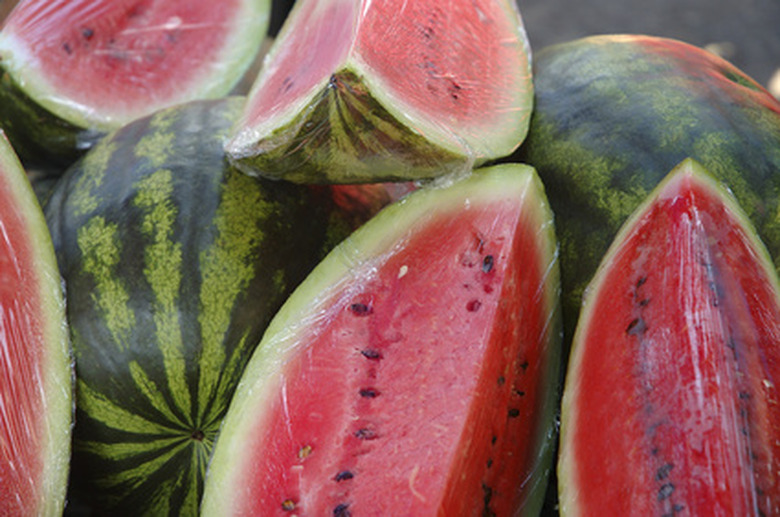The Role Of Ovaries & Ovules In Flowering Plants
Flowering plants may not move around or outwardly resemble animals in any meaningful way. Nevertheless, the way these organisms propagate further generations of themselves is more similar to the way most animals do this than meets the eye. While animals are usually either male or female, and in possession of the reproductive organs unique to each sex, flowering plants usually contain both male and female parts on the same plant, making them monoecious. Individual flowers in these plants that contain both male and female parts are called "perfect" flowers; some monoecious plants, however, have "imperfect" flowers, which contain only male or only female parts. Whole plants that include only male parts or only female parts, like animals, are called dioecious plants.
While animal reproduction requires insemination of a female by a male, the corresponding transfer of genetic material in flowering plants in called pollination.
Flower Anatomy
Flower Anatomy
Within the petals of a flower are long, narrow structures, much like plants in themselves, called pistils and stamens. The pistil is the "male" component of the flower, and the stamen is the "female" component. The stamen is usually shorter and folded open at the top.
The stamen consists of a stalk, called a filament, that is topped an anther, where the pollen is made. The pistil receives the pollen from the stamen, which grows down the style (analogous to the filament in the stamen) to the ovary. The ovary contains a number of ovules, each of which contains an egg.
Other parts of a flower include sepals and a receptacle. The sepals are below the petals and in younger plants cover the immature flower bud; these help protect the plant's seeds later, and their colors can help attract pollinators. The receptacle rests atop the flower stalk and serves as a sort of anchor or foundation for the flower.
Reproduction in Flowering Plants
Reproduction in Flowering Plants
The anther of the stamen produces pollen grains, which serve the function of the seminal fluid that animals have. Pollination is accomplished in a number of ways that require the involvement of outside forces called pollinators, although some pea plants can pollinate themselves without help. Pollinators may be birds, bees and other insects, wind and in some cases larger animals, including humans.
By whatever means, the stigma of the same plant (at least most of the time) receives the pollen grain, which then extends a growing pollen tube down the style into the ovary. Sperm cells produced in the pollen grain then move down the tube and make contact with one of the ovules in the ovary, ultimately reaching the egg inside. This fertilization results in the production of a seed, which can grow into another plant once it finds soil.
The Ovary in Detail
The Ovary in Detail
The ovary of a flower may contain only one ovule, but it usually has more. Some plants, such as cherries, have only one ovary (because these have only a single pistil). The egg structure is formally referred to as a gametophyte, in some species also called an embryo sac. Normally, there are usually eight cells in the gametophyte, including the egg itself; two synergids, one on each side the egg; two polar nuclei in the middle of the embryo sac; and three antipodal cells at the other end of the embryo sac from the egg.
Cite This Article
MLA
Beck, Kevin. "The Role Of Ovaries & Ovules In Flowering Plants" sciencing.com, https://www.sciencing.com/role-ovaries-ovules-flowering-plants-7192416/. 22 November 2019.
APA
Beck, Kevin. (2019, November 22). The Role Of Ovaries & Ovules In Flowering Plants. sciencing.com. Retrieved from https://www.sciencing.com/role-ovaries-ovules-flowering-plants-7192416/
Chicago
Beck, Kevin. The Role Of Ovaries & Ovules In Flowering Plants last modified August 30, 2022. https://www.sciencing.com/role-ovaries-ovules-flowering-plants-7192416/
